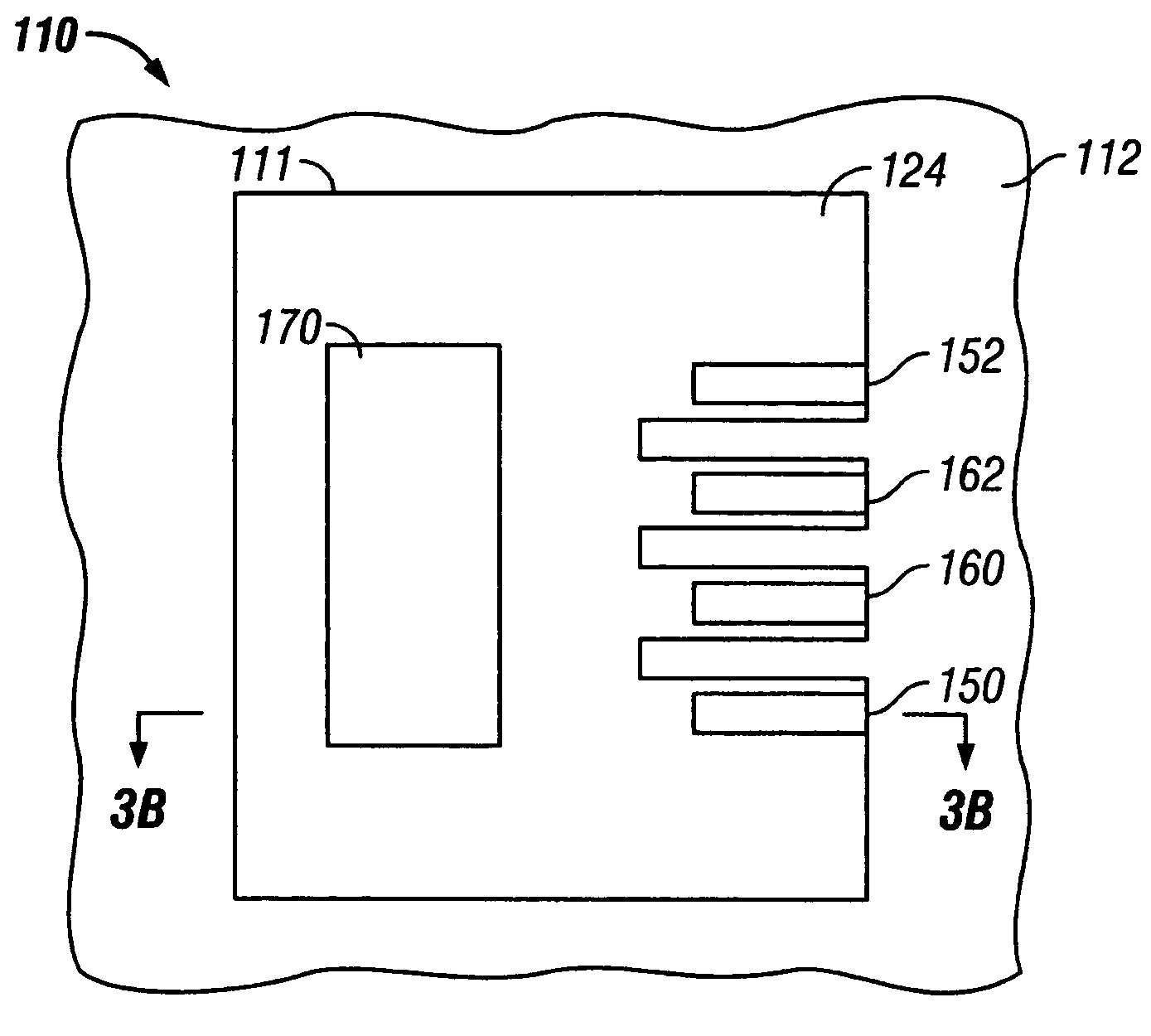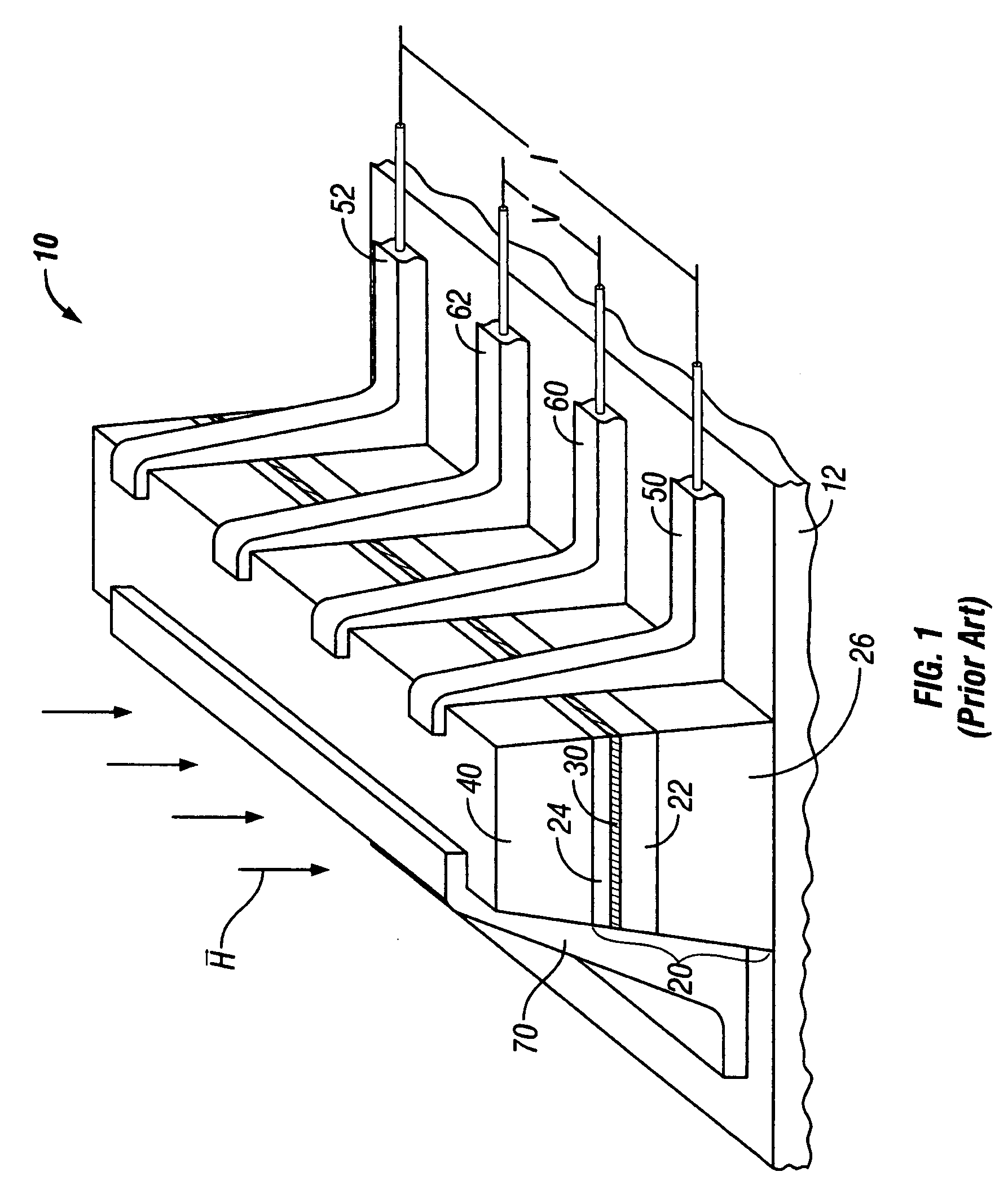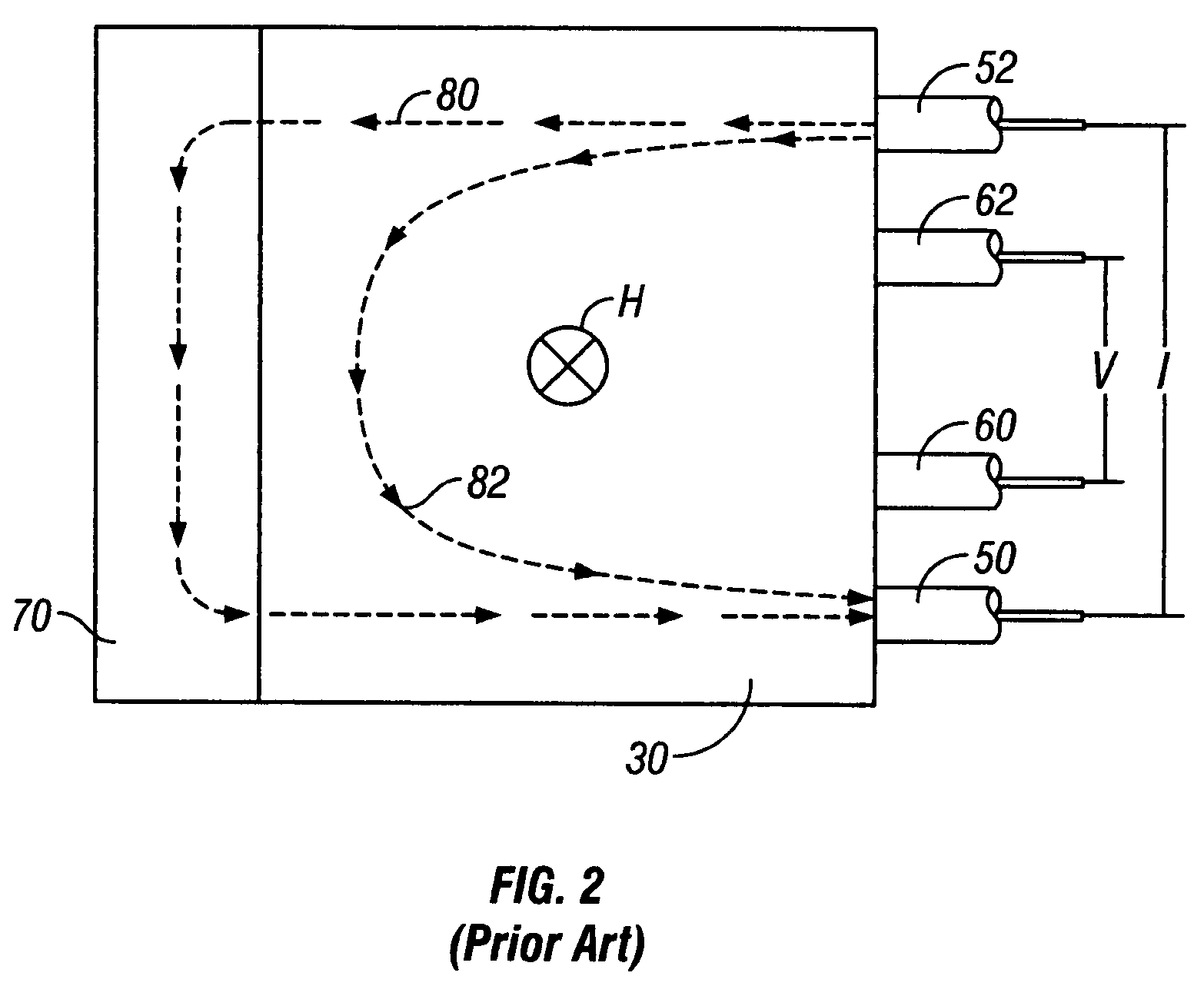Planar extraordinary magnetoresistance sensor
a magnetoresistance sensor, a plane technology, applied in the direction of resistance/reactance/impedence, instruments, record information storage, etc., can solve the problems of low contact resistance, loss of signal-to-noise ratio, and difficulty in fabricating the above-mentioned emr sensor
- Summary
- Abstract
- Description
- Claims
- Application Information
AI Technical Summary
Benefits of technology
Problems solved by technology
Method used
Image
Examples
Embodiment Construction
Prior Art
[0014]FIG. 1 is an isometric view of the prior art EMR sensor 10. The EMR sensor 10 includes a structure 20 that is a III–V heterostructure formed on a semiconducting substrate 12 such as GaAs. However, the EMR sensor described in this invention is not restricted to III–V semiconductor materials. For example, it may also be formed on the basis of silicon. The heterostructure 20 is a mesa above substrate 12 that results from a subtractive process, such as reactive-ion-etching (RIE). The heterostructure 20 includes a first layer 22 of semiconducting material having a first band-gap, a second layer 30 of semiconducting material formed on top of the first layer 22 and having a second band gap smaller than the first band gap, and a third layer 24 of semiconducting material formed on top of the second layer 30 and having a third band gap greater than the second band gap. The materials in first and third layers 22, 24 may be similar or identical. An energetic potential well (quant...
PUM
| Property | Measurement | Unit |
|---|---|---|
| thickness | aaaaa | aaaaa |
| thickness | aaaaa | aaaaa |
| thickness | aaaaa | aaaaa |
Abstract
Description
Claims
Application Information
 Login to View More
Login to View More - R&D
- Intellectual Property
- Life Sciences
- Materials
- Tech Scout
- Unparalleled Data Quality
- Higher Quality Content
- 60% Fewer Hallucinations
Browse by: Latest US Patents, China's latest patents, Technical Efficacy Thesaurus, Application Domain, Technology Topic, Popular Technical Reports.
© 2025 PatSnap. All rights reserved.Legal|Privacy policy|Modern Slavery Act Transparency Statement|Sitemap|About US| Contact US: help@patsnap.com



